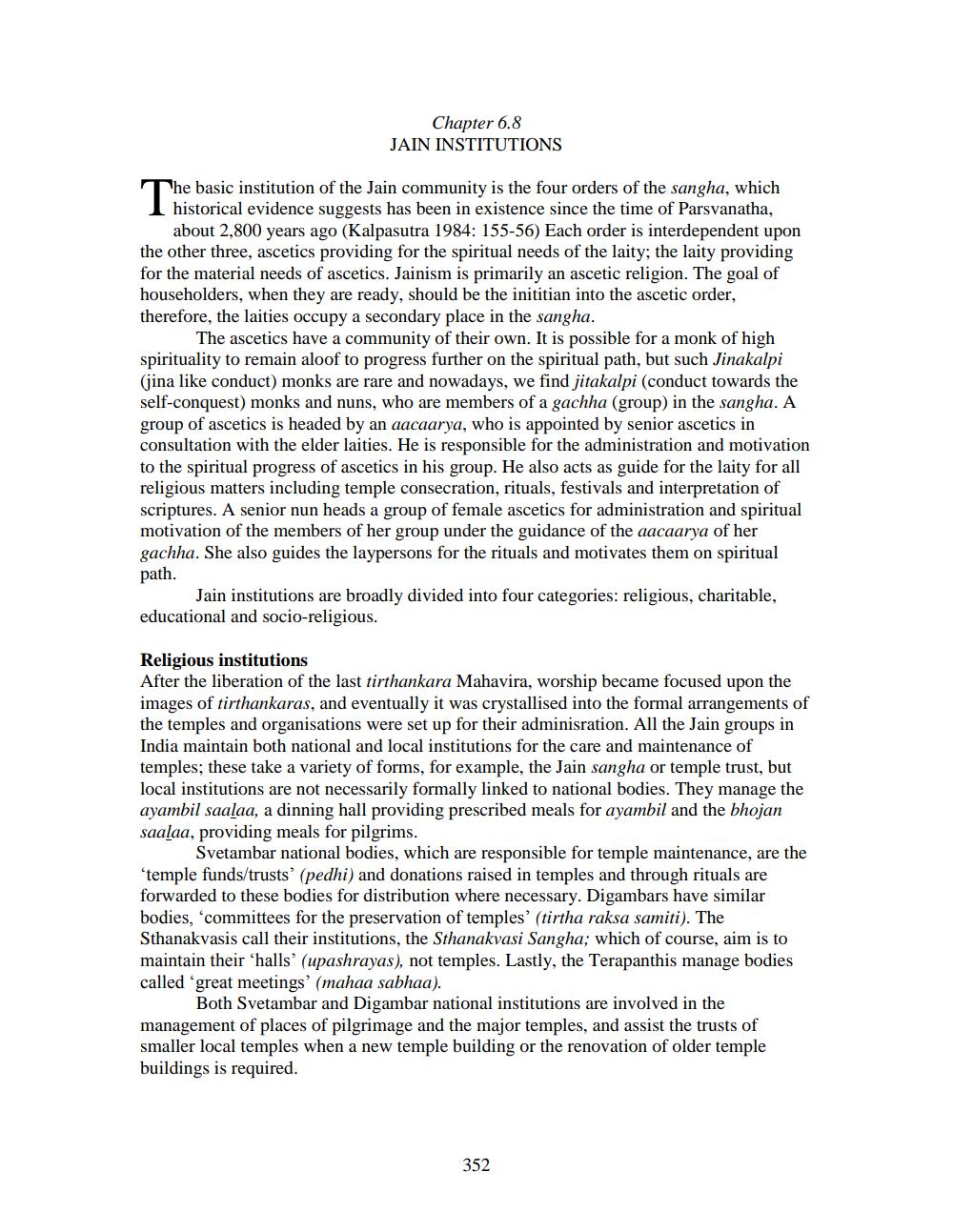________________
Chapter 6.8 JAIN INSTITUTIONS
he
which
historical evidence suggests has been in existence since the time of Parsvanatha,
about 2,800 years ago (Kalpasutra 1984: 155-56) Each order is interdependent upon the other three, ascetics providing for the spiritual needs of the laity; the laity providing for the material needs of ascetics. Jainism is primarily an ascetic religion. The goal of householders, when they are ready, should be the inititian into the ascetic order, therefore, the laities occupy a secondary place in the sangha.
The ascetics have a community of their own. It is possible for a monk of high spirituality to remain aloof to progress further on the spiritual path, but such Jinakalpi (jina like conduct) monks are rare and nowadays, we find jitakalpi (conduct towards the self-conquest) monks and nuns, who are members of a gachha (group) in the sangha. A group of ascetics is headed by an aacaarya, who is appointed by senior ascetics in consultation with the elder laities. He is responsible for the administration and motivation to the spiritual progress of ascetics in his group. He also acts as guide for the laity for all religious matters including temple consecration, rituals, festivals and interpretation of scriptures. A senior nun heads a group of female ascetics for administration and spiritual motivation of the members of her group under the guidance of the aacaarya of her gachha. She also guides the laypersons for the rituals and motivates them on spiritual path.
Jain institutions are broadly divided into four categories: religious, charitable, educational and socio-religious.
Religious institutions
After the liberation of the last tirthankara Mahavira, worship became focused upon the images of tirthankaras, and eventually it was crystallised into the formal arrangements of the temples and organisations were set up for their adminisration. All the Jain groups in India maintain both national and local institutions for the care and maintenance of temples; these take a variety of forms, for example, the Jain sangha or temple trust, but local institutions are not necessarily formally linked to national bodies. They manage the ayambil saalaa, a dinning hall providing prescribed meals for ayambil and the bhojan saalaa, providing meals for pilgrims.
Svetambar national bodies, which are responsible for temple maintenance, are the 'temple funds/trusts' (pedhi) and donations raised in temples and through rituals are forwarded to these bodies for distribution where necessary. Digambars have similar bodies, 'committees for the preservation of temples" (tirtha raksa samiti). The Sthanakvasis call their institutions, the Sthanakvasi Sangha; which of course, aim is to maintain their 'halls' (upashrayas), not temples. Lastly, the Terapanthis manage bodies called 'great meetings' (mahaa sabhaa).
Both Svetambar and Digambar national institutions are involved in the management of places of pilgrimage and the major temples, and assist the trusts of smaller local temples when a new temple building or the renovation of older temple buildings is required.
352




